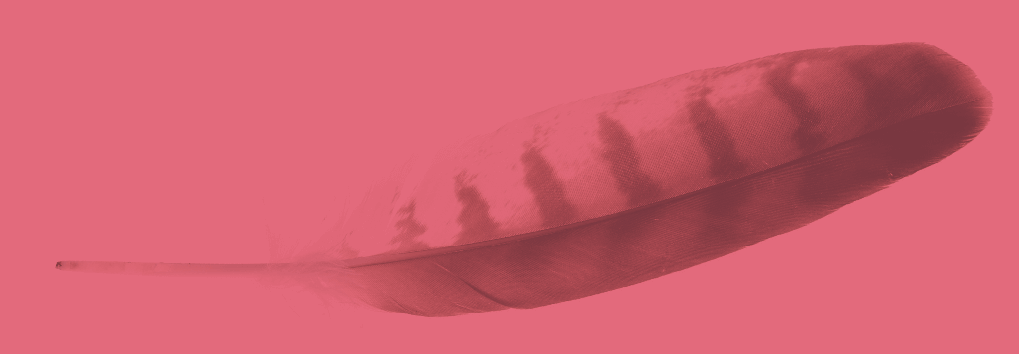Celebrating Indigenous writers and artists: A special feature
Featuring Gwen Benaway, Kai Minosh Pyle, Lindsay Nixon, Ziibiwan Rivers, Fallon Simard, Jaye Simpson, and Arielle Twist
This Magazine

EXPLORE THE FEATURE:
Editor’s note by Gwen Benaway ● Prose by Kai Minosh Pyle ● Interview with Lindsay Nixon ● Visual art by Fallon Simard ● Interview with Ziibiwan Rivers ● Prose by Jaye Simpson ● Poetry by Arielle Twist
A note from the editor:
When I was asked to guest edit an Indigenous-specific supplement for This, my first instinct was to look toward the Trans, Two-Spirit, and Queer Indigenous voices that were emerging around me. Indigenous transness is a complex way of being in the world. As Billy-Ray Belcourt notes in his essay, The Poltergeist Manifesto, Queer Indigenous being is a double impossibility. Indigenous being is often viewed as an impossible selfness, a remnant of a past conquered people or an unimagined future. Queer Indigenous being is similarly located in either the sexual and gender diversity inheritance of our Two-Spirit ancestors or invisible in mainstream White Queerness. If Indigenous being broadly and Queer Indigenous being specifically are seen as impossible ways of being within settler society, Indigenous transness is absent from colonial imaginations.
The voices in this supplement resist the assumed impossibility of our lives to show the vibrancy of our living. When Jaye Simpson writes “how do I explain my queerness to the gatekeeper of my blood line?” they are speaking back to the impossibility of Indigenous Queer and transness, answering it with a clear invocation of radiant being. Arielle Twist writes, “I am reworking my reality” and “How does a tranny/ coexist with lust.” Her writing is not about a distant Indigenous transness rooted in the past, but a celebration of an Indigenous trans body here in the present. Indigenous transness in Twist’s poetry is a sexually active and fully present hereness that not only exists, but desires and moves through a world that refuses to allow our realities to exist.
In Kai Minosh Pyle’s work, they inhabit a rich complexity of Anishinaabe and Métis being. They write, “duality is binary with an ndn heart,” complicating notions of traditions, gender, and pushing softly back on notions of Two-Spirit being which exclude or erase transness. The line, “i’ve stopped using the word ‘traditional’ because i no longer know what it means and maybe never did. you should, too,” hits like a thunderstorm over a lake. There is beautiful “survivance” in Pyle’s work, interweaving anishinaabemowin (Ojibwe) language while questioning the ways we are taught to see Indigenous transness.
Nothing celebrates the beauty of Indigenous trans bodies more than Fallon Simard’s art. In the series of images within this submission, they show their chest after top surgery. Intercut with purple, pink, and other digital images, the artwork is a ceremony of trans ndn embodiment. Their artworks and online activism is grounded in a fierce and loving defence of Indigenous trans women and resists transphobia. Within these images, Indigenous being is present as a vital and complex living that cannot be regulated into absence or ghostly haunting. Lindsay Nixon’s interview is another window into the kinship-based notions of Indigenous Queerness and Transness. Their work as an activist, community organizer, academic, and writer is creating space and expanding profound conversations on Indigenous being across many disciplines and discourses. Within their words, Indigenous Transness is not merely an inheritance, but a vital gift to our communities.
Finally, my interview with Ziibiwan Rivers explores the legacy of toxic masculinity and the important of working within kinship and spaces that uplift us. Their music is exceptional, merging genres and modalities to envision beautiful new soundscapes. Taking kawaii into profound NDN realities, Ziibiwan’s work is everything I’ve ever wanted in the world. In all the vibrancy present in this issue, Indigenous being is a burning light, unrelenting in its intensity but gentle in its illumination.
I am immensely honoured—as an artist, as a trans girl, as an Anishinaabe and Métis woman—for the opportunity to uplift these incredible voices and celebrate the wonder of their work. We are not impossible. We have always been here, we are still here now, and we will be here in the future. Share with us in our living.
— GWEN BENAWAY
READ MORE:
Prose by Kai Minosh Pyle ● Interview with Lindsay Nixon ● Visual art by Fallon Simard ● Interview with Ziibiwan Rivers ● Prose by Jaye Simpson ● Poetry by Arielle Twist
Thank you to the Ontario Media Development Corporation for their support of this project.